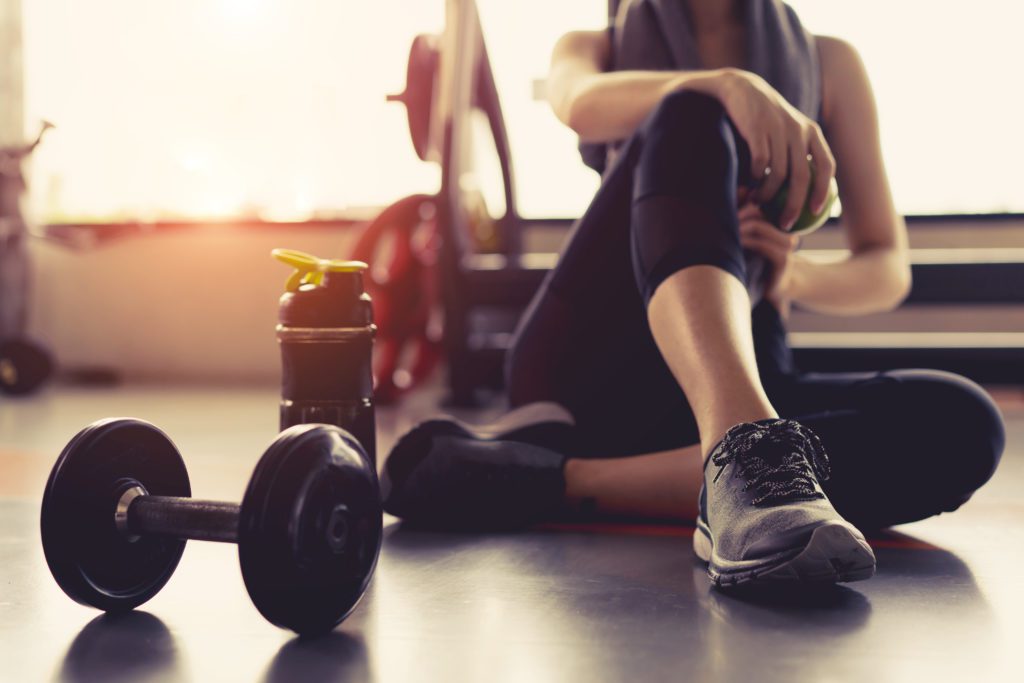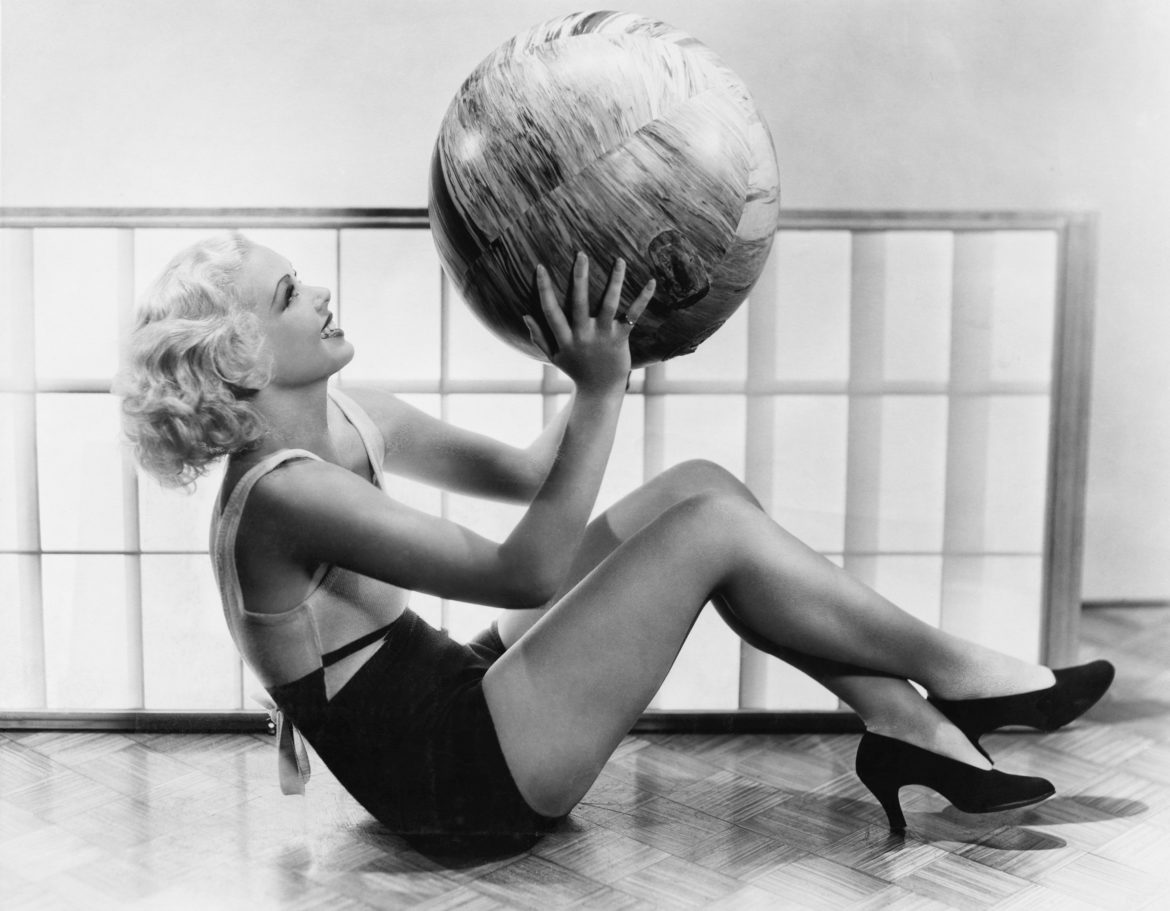Women working out, staying fit through exercise, and keeping active is a cultural phenomenon and it’s an aspect in the evolution of women that’s generally overlooked. The subordinate role women played for centuries in a male-dominant society thoroughly prohibited exercise as we know it today. Indeed, it was not until the 1920s, with the emancipation of women and the ratification of the 19th Amendment of the U.S. Constitution that granted women the right to vote, that physical fitness was even considered for women.
Let’s begin in London, 1827, with England’s first female physical fitness instructor, Marian Mason (who had trained under the “father of exercise,” Swiss instructor Peter Heinrich Clias) who published her own treatise, On the Utility of Exercise; or, A Few Observations on the Advantages to be Derived from its Salutary Effects, by Means of Calisthenic Exercises, in which she offered gentle and pleasurable exercises to prevent the numberless disorders arising from a state of inaction.” Marian was the original personal workout instructor, offering weekly classes in calisthenics for ladies under the patronage of the Duchess of Wellington and Lady Byron.
In 1831, the Journal of Health, published in Philadelphia, also encouraged women to take up calisthenics: “Calisthenics is…a reasonable, methodical, and regular employment of the exercises best calculated to develop the physical powers of young girls, without detriment to the perfecting of their moral faculties.” Young girls were encouraged to exercise “within a limited space, the kind of it should be frequently changed, to encourage the continuance of it, by renewing the stimulus of exertion.” But once past puberty, a girl was urged to restrict exercising, as “it has a permanently bad effect, by wearing out the powers of the body and bringing on premature old age.” Indeed, throughout the 19th century, brisk exercise was actively discouraged. “The constitution of women is adapted only to moderate exercise; the graces cannot be reconciled with fatigue and sunburning. Excessive exercise reduces and deforms the organs, destroying by repeated compressions that cellular substance which contributes to the beauty of their contours and their colours,” was the mindset of the day.
This did not mean women should be sedentary. Walking (then, as today) was universally commended as the essential exercise for women. “This should be practiced every day in the year unless the inclemency of the weather absolutely forbids it. The English are the healthiest people in the world, and this arises in part from their systematic exercise. Even the most delicate and high-bred ladies there take an airing almost every day, and usually walk several miles. They do not mind a drizzle or a shower.”
Dancing was also considered exercise—think of Jane Austen—providing it was done discreetly. A matron might, on occasion, agree to a dance but by-and-large, dancing was meant for young women of a marriageable age. “Dancing is the most favorite exercise of young women; and when properly taught, is healthful and confers a gracefulness of gait, resulting from the disciplined management of the whole body.” However, there were limits. Young women were forewarned never to engage too long in a Scotch reel or other “rapid and violent” dances as these “are extremely injurious to girls of a delicate frame and apt to produce ganglions on the ankle joints.”

Riding to the hounds or taking a gallop surely was invigorating exercise but more importantly, aristocratic young women of marriageable age who rode were more likely to attract prospective, wealthy suitors. Still, when taught to ride, it was strongly suggested that “If riding be recommended on account of health, girls should be taught to ride on both sides of the horse, to prevent that twisting of the body, which the continued use of the same side is apt to occasion.” [The Literary Gazette and Journal of Belles Lettres, Arts, Sciences, &c.]
In 1920, the 19th Amendment to the United States Constitution was the long-awaited, critical turning point that gave women the right to vote—but it also liberated the fairer sex beyond politics. As though a light switch had suddenly been turned on, women began to embrace their bodies, bob their hair, paint their nails, shorten their hemlines, and lower their morals—after all, it was the Roaring Twenties. Two of Hollywood’s top box office actresses known to engage in exercise were Carole Lombard, who hunted and fished off-camera with her avid-sportsman husband, Clark Gable; and Katharine Hepburn, who golfed and played tennis in her private life and later, on screen in Pat and Mike (1952), one of the greatest screwball comedies of all time, opposite her real-life lover, Spencer Tracy.
In 1936, the health club concept was born when iconic fitness coach and nutrition expert, Jack LaLanne, the “Godfather of Modern Fitness,” opened America’s first health and fitness club, in Oakland, California. He encouraged women to lift weights in ways that toned, not bulked, muscles, and by the 1980s, there were more than 200 Jack LaLanne’s European Health Spas (today licensed by Bally Total Fitness.) In 1953, “The Jack LaLanne” Show first aired on television—and continued, uninterrupted, for a record 34 years as the longest-running exercise show in television history. In 1959, his second wife, model Elaine Doyle LaLanne, joined him on his daily, 90-minute programs. “He inspired me to give up my chocolate doughnuts and cigarettes and focus on my health. I decided I was going to work out with Jack,” said the woman who would become known as the “First Lady of Physical Fitness.” The couple were married for more than 50 years, until Jack’s death, in 2011, at the age of 96. Tune to The Jack Lalanne Show, Ep. 1 (Part 1) on YouTube.
In 1958, the Wham-O Toy Company manufactured the Hula Hoop, which many women used to whittle away their waistline and in 1960, exercise was married to music when Chubby Checker came out with his mega-hit, “The Twist,” inspiring Trim Twist Exerciser, manufactured from 1965 to 1980 in Coral Gables, Florida, to “twist away your love handles.”
Still, in the 1960s, women were cautioned that our bodies could not “handle” exercise and those who did were in danger of becoming too muscular. Diet sodas, which first came out in 1952, and sugar substitutes sold like crazy as women starved themselves to look like the world’s first supermodel, Twiggy. Her painfully anorexic figure was emblazoned on the covers of Vogue and Harper’s Bazaar—and marked the beginning of the fashion industry’s brainwash-blitz to promote “skinny” over healthy and fit, sending women’s health and self-esteem into a tailspin. Then along came Jane (Fonda) and the 1980s saw, for the first time in the history of women, a massive movement to seek, learn, and implement healthy diets, lifestyles, natural beauty, and exercise. Tae Bo and other aerobic exercises became popular in the 1990s and in 2000, the Latin-inspired dance exercise, Zumba. Of course, yoga has also been a universal, whole-mind and body practice since it originated in India 5,000 years ago. Only recently have plus-size, affirming women like Rihanna, Melissa McCarthy, supermodel Ashley Graham, and Octavia Spencer, had the courage to embrace who they are—curves and all—while maintaining a healthy, active lifestyle.
And so, as we “spring into spring” what will you do? Walk every day, if only for 20 minutes, and soon you’ll see a difference. If going to the gym is already an important part of your day, why not switch things up and incorporate dance classes? Whatever you decide, start by scheduling a physical with your doctor and start on the right foot, with an exercise plan that will realize results gradually as you stay the course and venture into a healthier, long-lasting lifestyle.

